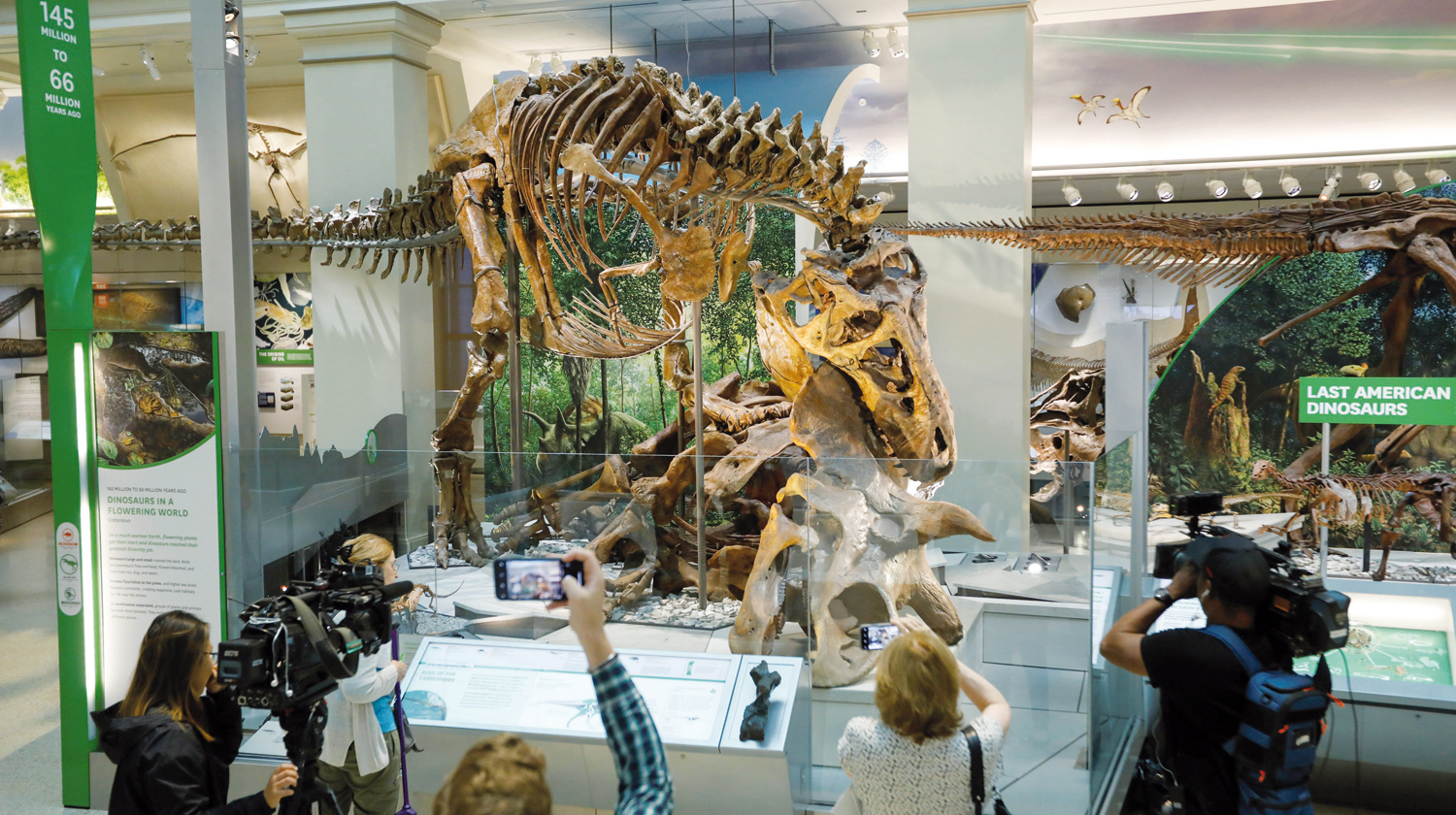

A dramatic scene from the twilight of the age of dinosaurs — a T. rex feasting upon a horned plant-eater named Triceratops — will greet visitors when an ambitious new fossil hall opens on Saturday at the Smithsonian Institution’s National Museum of Natural History.
Construction of the hall at the federally administered Washington museum cost $110 million: $70 million in public funds and $40 million in private funds. It replaces a fossil hall that was last renovated in 1981 and closed in 2014, bringing up-to-date scientific information to an exhibit that had become out-of-date at one of the world’s leading natural history museums.
The Tyrannosaurus rex, found in Montana in 1988 by amateur fossil hunter Kathy Wankel, measures 38 feet long (11.5 metres). The Triceratops, nicknamed Hatcher, is 20 feet (6 metres) long. The skeletons are mounted with the T. rex, one of the largest meat-eating dinosaurs, standing over the fallen Triceratops.
“I knew that we needed something dramatic for what would inevitably be a centrepiece of the hall. And these are two dinosaur species that co-existed 68-66 million years ago in western North America, so it would represent a possible real-world interaction,” said Matthew Carrano, the museum’s curator of dinosauria.
“But we’ve deliberately left the scenario open, as to whether this represents T. rex killing Triceratops or scavenging an already dead individual. The idea is to better portray the role of an apex predator, which is often opportunistic. In life, I imagine that even T. rex would have favoured easier meals than a healthy, adult Triceratops — if such were available: young or sick or elderly individuals, for example,” Carrano added.
Triceratops was among the largest of four-legged horned dinosaurs called ceratopsians, reaching up to about 30 feet (9 metres) long, with horns above its eyes and nose, and a bony shield protecting its neck.
An asteroid impact 66 million years ago doomed the dinosaurs and many other land and sea creatures.
Other dinosaurs on display include: a rearing Camarasaurus — one of the long-necked, four-legged sauropods; a 90-foot-long (27-metre-long) Diplodocus, another sauropod; a meat-eating Allosaurus sitting, guarding a nest of eggs; and the tank-like armoured Euoplocephalus.
The hall also displays fossils such as mammals and marine reptiles.
Carrano said he hopes visitors will gain “a sense of dinosaurs as once-living animals, in some ways not all that different from some animals today: they ate, slept, breathed, et cetera.”
“I don’t want them to seem entirely alien, even if they are awesome and bizarre in other ways,” Carrano said. — Reuters
Oman Observer is now on the WhatsApp channel. Click here



